15 Craziest Foods You Won’t Believe Actually Exist
Prepare your taste buds for a wild ride as we explore the most eccentric and unusual foods around the globe. This list highlights the extraordinary diversity of human taste, from exotic delicacies to downright bizarre culinary concoctions.
Casu Marzu – Sardinia, Italy
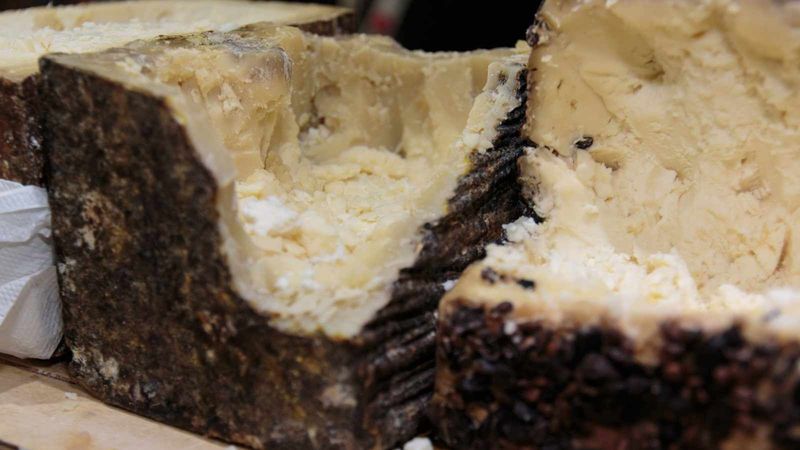
Casu Marzu is a traditional Sardinian cheese from sheep’s milk that undergoes a fascinating transformation. Within the cheese, live insect larvae hatch and digest it, resulting in a distinct flavor that appeals to acquired tastes.
However, this delicacy has been deemed unsafe for human consumption due to health risks associated with the presence of live insect larvae. Indulging in Casu Marzu is at one’s discretion and responsibility.
Sannakji – South Korea
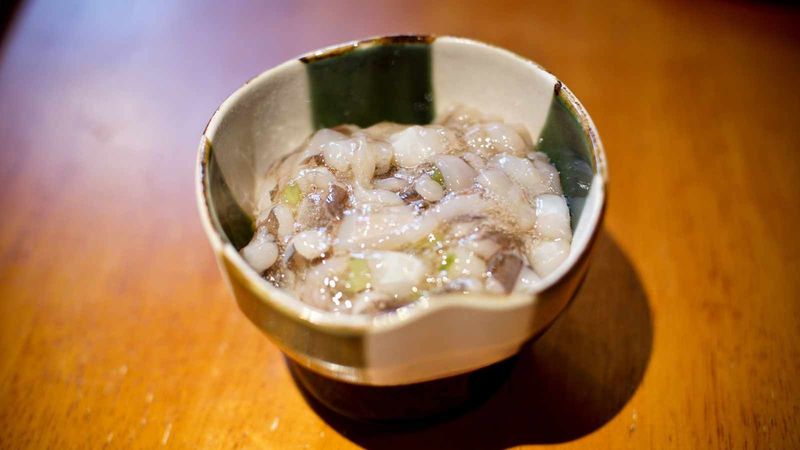
This dish translates to ‘wriggling octopus.’ The dish comprises a live baby octopus cut into small pieces in soy, garlic, and sesame oil sauce. The tentacles are still twitching after being severed from the octopus, so the dish poses a risk of choking, and it is a daring dish that will test your mettle.
Shirako – Japan
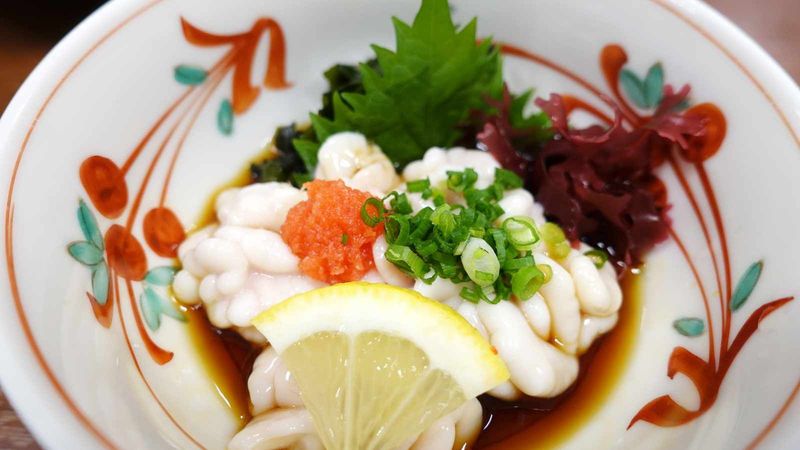
Shirako, or ‘white children,’ is the milt of a male fish. You can have the creamy and custard-like substance raw as sashimi, boiled and cooked in soy sauce, or fried with vegetables. While it may appear off-putting due to its milky white appearance, shirako has become an increasingly popular delicacy among Chefs in Japan.
Rocky Mountain Oysters – USA
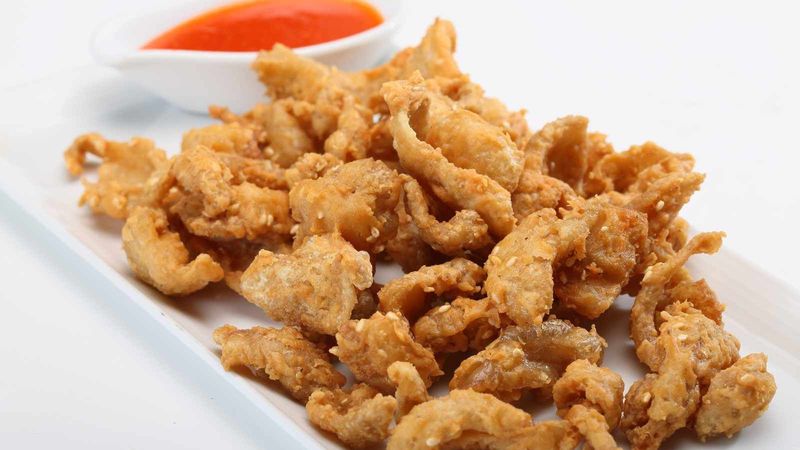
Rocky Mountain Oysters, more popularly known as Prairie Oysters, are not a seafood dish; they are fried bull testicles. The testicles are peeled, coated in flour, and deep-fried until golden brown. This peculiar delicacy is enjoyed in the American Great Plains region and pairs well with cocktail sauce.
Balut – Philippines

This savory delicacy comprises boiled fertilized duck eggs. Its contents include an embryo, parts of the skeleton, beak, and bones, all preserved within the egg. The Balut has a subtle gamey taste resembling chicken flavor. Some circles say it is a nutritional powerhouse with high protein, calcium, and phosphorus concentrations.
Sago Grubs – South Pacific Region

Sago Grubs are the larvae of beetles that feed exclusively on Palms in Eastern Asia and the Melanesian Islands. After boiling or roasting, sago grubs can be a snack or a mouthwatering main course. Notably, their texture is delightfully crunchy, and their flavor is often reminiscent of bacon.
Insects – Thailand

Thailand’s vast array of insects, like crickets, grasshoppers, bamboo worms, and silkworms, makes it one of the best countries to try bug-eating. People stir-fry these bugs with vegetables, deep-fry them, or roast them over an open flame. Roasted grasshoppers are a popular snack commonly paired with beer.
Fried Piranha – Amazon Basin

People in many parts of South America enjoy eating fried piranhas, particularly in the Amazon region. Chefs often season them with herbs and spices and grill or fry them, offering a unique and flavorful culinary experience. Diners often describe the taste of fried piranhas as sweet and salty, with a texture that resembles a fish steak, making them appealing to seafood enthusiasts.
Hakarl – Iceland
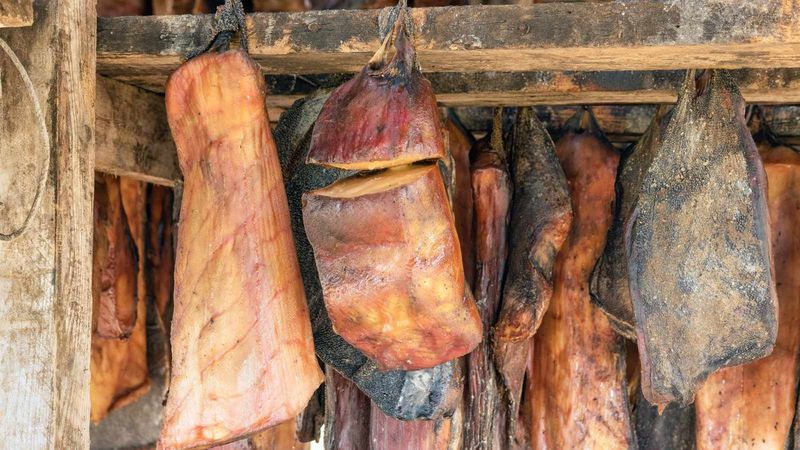
Hakarl is a traditional Icelandic delicacy from the meat of Greenland sharks, which undergoes a fermentation process in an underground pit for several months. As time passes, the flavors intensify, giving rise to an intense and chewy semi-dry fish.
Lutefisk – Norway
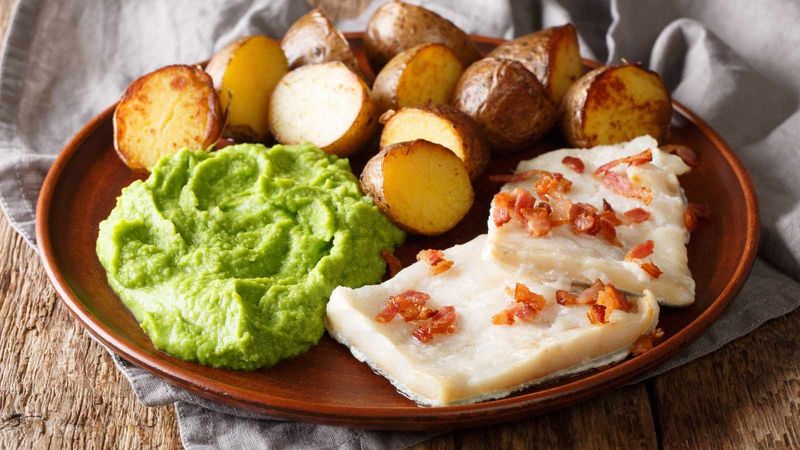
Lutefisk is a traditional Norwegian dish made by soaking cod in lye for several months, which gives it a distinct texture and flavor. After the soaking process, the fish is steamed to perfection, resulting in a tender consistency.
This flavorful delicacy goes alongside a serving of creamy potatoes and crispy bacon, balancing tastes and textures. Due to its unique preparation and intense flavor, lutefisk has earned the title ‘Norway’s national dish.’ It is a part of Norwegian culinary heritage.
Fried Brain – USA

A fried brain sandwich is a curious concoction served in the American Midwest. This dish consists of fried cow brains placed between slices of white bread. This sandwich is traditionally served with mustard, onions, and pickles for an added punch of flavor. While some may find eating brain tissue unusual or daring, adventurous eaters who have tried Fried Brain often describe it as surprisingly delicious and crunchy.
Tuna Eyeballs – Japan

In Japan, tuna eyeballs are a delicacy, highly valued for their unique taste. The boiled eyeballs’ texture is like tender squid. The flavor is slightly sweet and buttery, making it an enjoyable treat for those who appreciate something out of the ordinary.
Haggis – Scotland

Haggis, made from sheep organs, oatmeal, onion, and spices, and packed in a sheep’s stomach, is one of Scotland’s most beloved dishes. Restaurants serve haggis with mashed turnips or ‘neeps’ and potatoes, also known as ‘tatties.’ This savory dish has become so popular that many restaurants worldwide offer it on their menus.
Century Eggs – China

Century eggs are a delicacy from China made by preserving duck, quail, or chicken eggs in a mixture of clay, ash, and salt for several weeks or months. This results in an interesting texture and a unique flavor that appeals to more adventurous palettes. The egg white turns into a dark amber jelly while the yolk tastes creamy and savory.
Kiviak – Greenland

In Greenland, Kiviak is a traditional food where people stuff sealed auks (small sea birds) into hollowed-out seal skin. They then leave the birds to ferment for several months, intensifying the flavor further. Kiviak is said to taste like aged cheese with an overpowering scent that usually puts off newcomers.